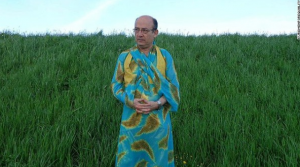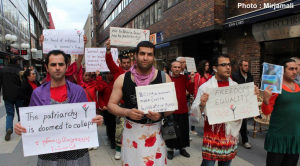As the 2014 year marks the centenary of the first World War so does it mark the centenary of the division of the Middle East, and so does it mark the centenary of the Kurdish population’s loss of it’s own sovereignty. Since these hundred years have past the Kurdish population has suffered from numerous cruelties by the hands of their given state.
Over the past century the Kurdish people have not let the idea of a sovereign Kurdistan stray far from their thoughts. Because the ethnicity’s population is split by four states (Iraq, Turkey, Iran, and Syria) each country’s population is fighting a different battle in order to join in a unified Kurdistan. The dynamics that involve this assemble of a sovereign Kurdistan is a bit too much for my brain to wrap around. In spite of my misunderstanding of the dynamics involved I will attempt to create a rough sketch of the situation, with a focus on the Kurds of Iraq.
The two articles used for this rough sketch will be 1) The Tower published article “Say it Again. Kurdish Independence Now” by Jonathan Spyer and 2) the Times magazine published article, “Why Kurdish Independence is the Only Solution for the World” by Ayub Nuri.
Spyer, the author of the “Say it Again. Kurdish Independence Now” provides a great deal of reasons as to why Kurdish Independence is an ideal goal to be supported by international state actors. He briefly writes about each Kurdish population in the four states they are divided over, claiming that each population needs independence: however, he spends more time on the Kurdish populations of Syria and Iraq. Spyer focuses on the Iraqi and Syrian Kurdish independence because they live within two failing states that have been a “byword for war, repression, and terrorism for the last fifty years.” He also insists the Kurds’ need independence because they live within the most peaceful regions of their given country, they are building up their economies, and their governments as well as their population are pro-western. In Spyer’s article he lastly admits that in order for the Kurds’ to achieve independence western support is well needed. He fears that independence may not be achievable if the west decides to pull their interest away from the Middle East region.
As Spyer views the western powers presence in the region as a positive for the Kurdish independence movement Author Ayub Nuri of “Why Kurdish Independence is the Only Solution for the World” views the western powers presence as a negative one. Nuri claims that the IS insurgency in the Kurdish region of Iraq and Syria has given reason for the western actors (mainly the U.S.) to have more focus on the region and provide aid the Kurds.’ He declares that the U.S. support has saved millions of Kurds, but in spite of this, the west’s support could also blurr the Kurds’ vision of independence.
Nuri dates back to before the IS militants attacked Iraqi Kurdistan and claims that the failing states had lost notice of the Kurds due to IS’ attacks on Sunni provinces which consequently removed the presence of the Iraqi army from Kurdistan’s borders. As a result, the Kurds began to remove flags from their government institutions and replace them with the Kurdish flag, they had set up a referendum for an electoral commission and had started circulating Kurdish banknotes. Unfortunately, when the IS militants started attacking Kurdish regions in the two states the western powers stepped in and provided aid to the Kurds. Nuri’s fear is held in the belief that because of the U.S. aid the world will see the Kurds as a “spoiled kid that keeps asking for more.” He draws this from the past thirty years of aid the Kurds have received from the U.S. due to multiple conflicts the Kurds have had with the Iraqi government. As a result of the west’s alliance with the Kurds it has caused the Middle Eastern region to resent and mistrust the Kurdish population furthering their oppression.
Despite the two authors’ disagreement on western support, they both believe that the Iraqi-Kurdish relationship is one that is not progressive. As Nuri metaphorically writes that the relationship is “like a couple that starts another fight every time they try to make up.” They both agree that the Kurdish region has passed the test of statehood, has proved that they are a peaceful entity that needs to be released from their chains.
If the U.S. were to support the Iraqi Kurds’ independence, no matter how beneficial it is for the region it may weaken the U.S. alliance with the already well established and internationally recognized state Turkey. The U.S. may also be skeptical of supporting the emergence of a Kurdistan because it may lead to non-democratic state and could also become a haven for the U.S. deemed terrorist organization PKK. Their are many wearies that are attached to the idea of an independent Kurdistan, but their are also many wearies attached to the unstable Iraqi and Kurdish relationship.
As I attempted to wrap my head around this complex conflict it became clear to me that the Kurd’s independence in both Iraq and Syria and eventually in Turkey and Iran, is necessary for the Middle East’s stability. If the Kurd’s are able to become an autonomous nation recognized to the world, the oppression of the ethnicity by the region will lessen its presence. If Kurdistan is able to build up their capacity the west will not have to provide aid when the Kurds are faced with adversity. And if a Kurdistan is created then the violence in the region may not be a prevalent due to the the Kurds separation and freedom from their opposition. Furthermore, an independent Kurdistan will allow the rise of prosperity and stability to blossom in the Middle East.
Natalie

